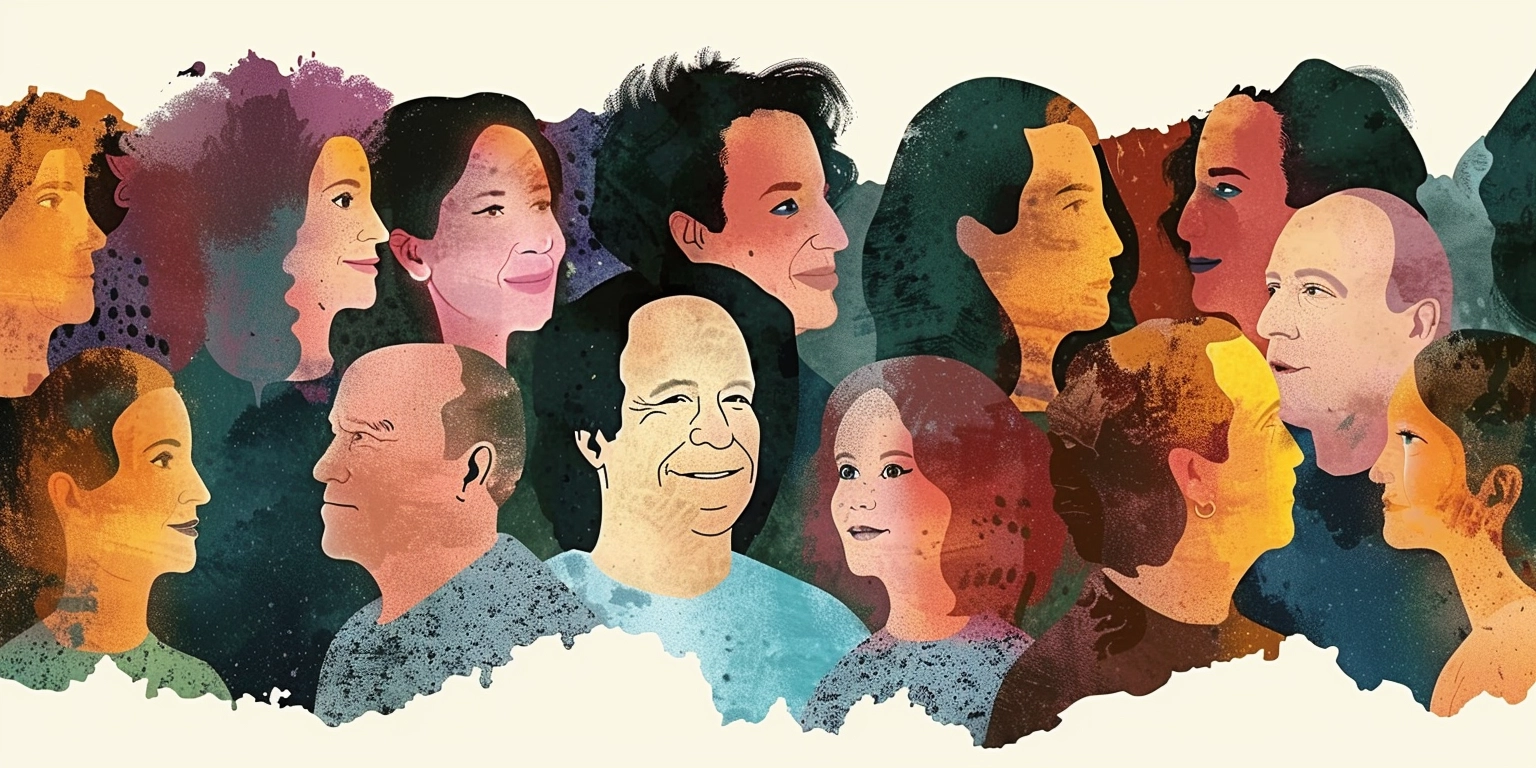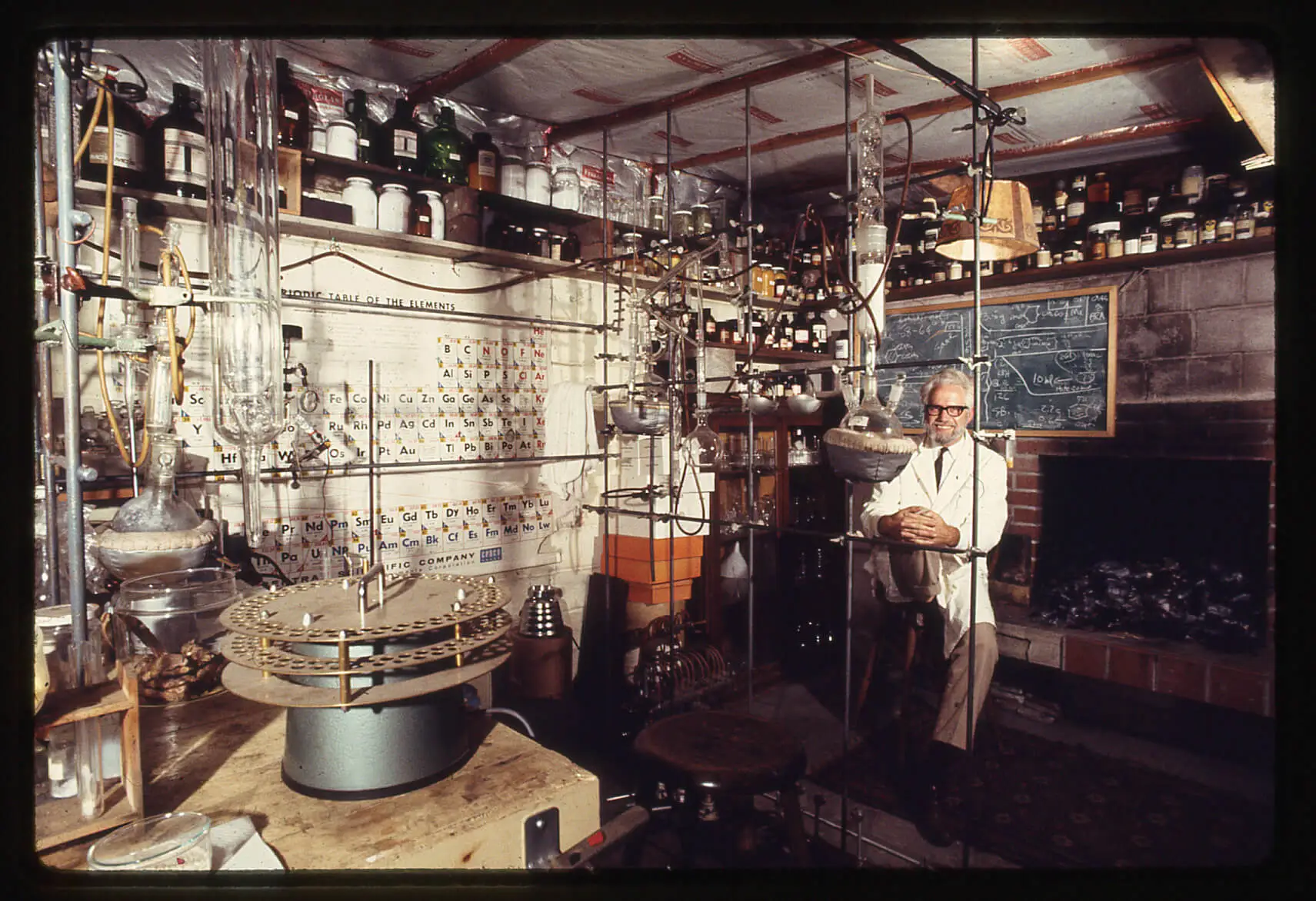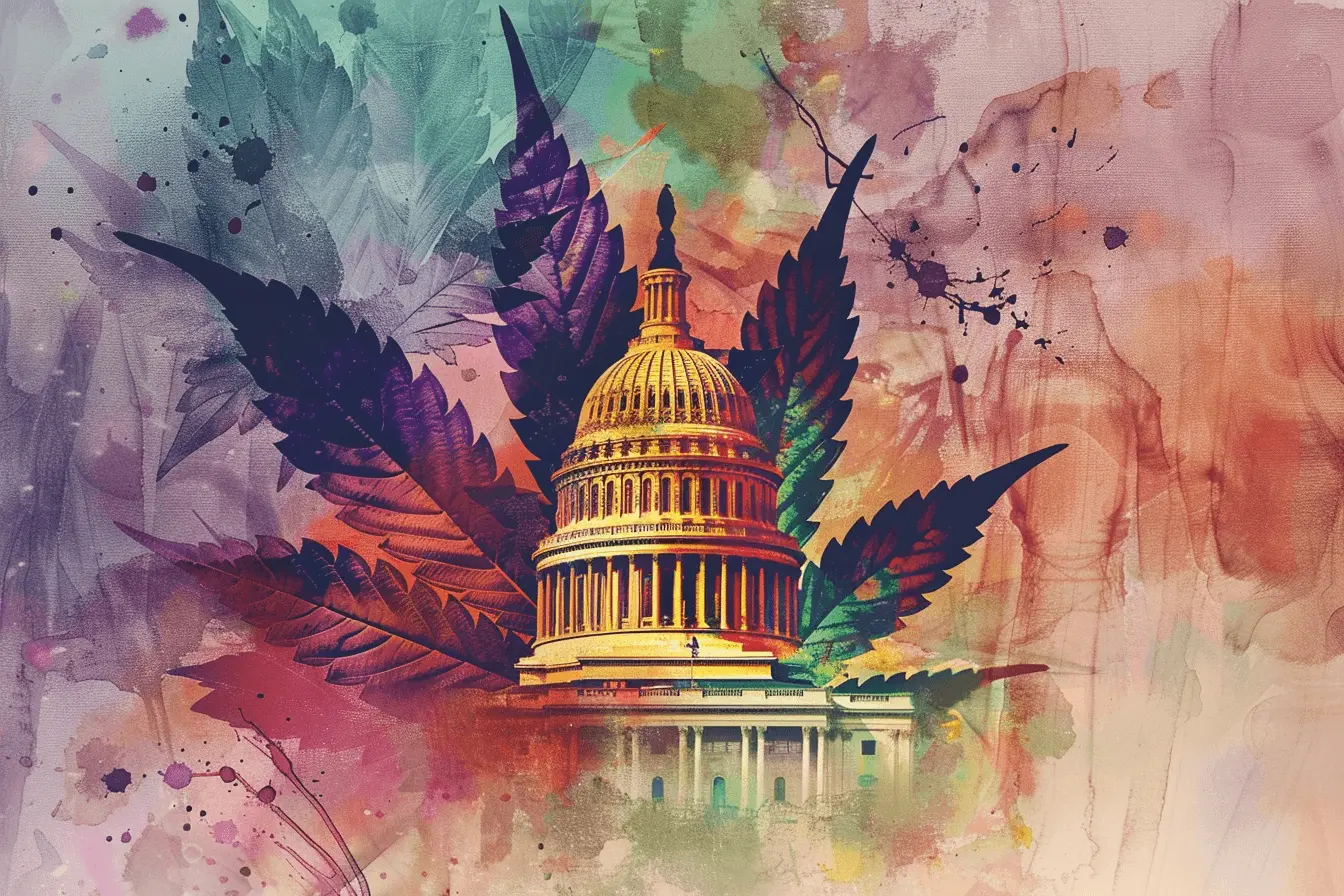Psychedelic Science 2023 has come and gone, representing the largest psychedelic gathering ever (unless you count a few particularly groovy music festivals). It brought together over 10,000 people who spent several days seeking to understand and clarify where the space is today, and where it’s headed in the years to come. Helmed by the Multidisciplinary Association for Psychedelic Studies (MAPS), the conference drew some of the biggest names from across the psychedelic realm—activists and artists, researchers and entrepreneurs, indigenous advocates, therapy practitioners, and a variety of other aficionados—to celebrate the rise of the so-called Psychedelic Renaissance and plot its next steps.
The event proved to be more wide-reaching than anyone had anticipated. While I went into it with what I thought was a clear plan of what I would see and who I would speak with, all bets were off once the show got underway, as most attendees spent their time racing frantically between lectures, panel discussions, product exhibitions, art displays, and a whole lot more. Some simply elected to kick back on the grass in front of the convention center, smoke joints, and watch the crowd pass.
By the end of the world’s biggest psychedelic conference, pretty much everyone had sore feet and a sort of burned-out smile. Overall the in-person vibe was upbeat and united (though there was a slightly different tone on some social media platforms). It was an “important meeting of the psychedelic tribes,” as researcher and writer Dr. Richard Miller put it, and for the most part, we were all happy to be there. That doesn’t mean that the conference was without controversy, as we’ll explore below.
Now having had a chance to reflect on Psychedelic Science 2023, here are a few key takeaways that will shape the future of the movement.
Our Numbers are Legion

Before the event, it was reported that 10,000 people would attend, and supposedly, in the end, that number crept past 12,000. That’s a lot of people on paper, but I don’t think anybody really realized the scale of that crowd until it descended upon downtown Denver. Of course there are conventions that are more sizable than this one, but this is a notable shift for this space.
While the conference got into full swing on Wednesday, a smattering of workshops launched on Monday, so many attendees were filtering into town to participate in these and register for their badges. As a result, the number of people walking around the city’s downtown region wearing said badges swelled noticeably as the week progressed.
By Wednesday, just about everyone within a ten-block radius of the Colorado Convention Center seemed to be wearing the psychedelic badge. Hotel lobbies were packed with conventioneers, and sometimes late at night, these lobbies got quite rowdy. After the PS2023-adjacent Flaming Lips concert, for example, the lobbies of the Klimpton and Ritz were bustling with starry-eyed, often visibly tripping concertgoers who chatted and giggled while hotel staff raced around trying to keep everyone drinking water.
But I think the moment that most of us recognized the sheer numbers, and potential power, of the movement came during MAPS founder Rick Doblin’s opening address on Wednesday morning. The convention center theater was overflowing with people from all walks of psychedelic life. There has never been anything like it. It was the Madison Square Gardens moment of psychedelia.
Psychedelic Culture is Changing

Seeing so many psychedelic stakeholders in one place clarified how the psychedelic culture is evolving. Psychedelics had long been relegated primarily to tie-dyed hippies punctuated by the occasional oddball scientist, but those days are over. Yes, the flower children and weird scientists still have a strong presence, but they no longer seem to be leading the movement.
“Our movement is more powerful than we ever imagined, and we should be aiming big for what we accomplish together and it’s time for a constitutional amendment affirming the rights of bodily sovereignty.”
— Jason Ortiz
As one of the founders of the drug information website, Erowid, told me, Psychedelic Science had undergone “a change from an activist conference to a commercial conference.” The vast majority of attendees represented the industrial aspect of the movement in some way, with scores of psychedelic brand promoters and exhibition employees, venture capitalists, and other psychedelic-curious entrepreneurs looking to network and seize upon the growing business opportunities afforded by—what will likely be—an increasingly legal market (more on legality in a moment). This shift will have benefits and drawbacks.
On the upside, the normalization and broadening of the culture will help to expand access and remove social stigmas. Believers argue that psychedelics have the potential to transform our civilization for the better, increasing empathy, community, and consideration for nature. These are important goals that may not only improve the quality of life for many around the world, but in the face of climate change, there are some who truly feel that psychedelic exploration could legitimately be a part of the sea change necessary to save the species. (Though, we should note that the psychedelic space has its own sustainability concerns that it’s wrestling with.)
On the other hand, as things evolve, longtime psychedelic community members may experience a sense of loss. As Earth from Erowid explained, there used to be a sort of “self-selection” process by which one had to brave certain legal and social barriers to be initiated into the psychedelic realm. This resulted in a highly recognizable community with largely shared ideals and aesthetics. As this fades from prominence, many will feel that a once-clear identity is slipping into the past.
And indigenous peoples, too, are currently experiencing the loss of their authority over certain psychedelics, as we will explore in greater detail in a moment.
Federal Reform is Not assured, but the Future is Bright
It should come as no surprise that psychedelic policy’s current state and potential future were among the key topics at Psychedelic Science 2023. Without the proper legal framework, the whole endeavor could be all for naught. And while progress has been made, it is not assured.
To explore all of this, MAPS dedicated a stage to policy talks upon which a steady, three-day-long stream of conversation on state and federal legal matters unfolded. The focus was primarily on topics such as criminal justice reform, new legislative and initiative efforts, policy in key psychedelic nations such as Jamaica and Mexico, and so on. These were delivered by a slew of legal scholars and experts such as Ismail L. Ali (Director of Policy and Advocacy at MAPS), Jason Ortiz (Executive Director of Students for Sensible Drug Policy), Kellen Russoniello (Senior Staff Attorney for Drug Policy Alliance), and attorneys working to transform drug policy in courthouses across the country.
Afterward, I spoke with several key speakers to explore what they thought were the most important policy messages to come out of the conference. There was a resounding thread of optimism throughout the discussions.
“There is significant momentum behind decriminalization of psychedelics and of all drugs,” said Kellen Russoniello, “and that this momentum should be channeled to advance drug policies that are equitable and complementary, e.g., that does not accomplish reform by throwing any populations or other efforts under the bus.”
“With entrenched interests, achieving positive social change and changing legal systems is hard—but possible. Like all great and revolutionary achievements, successful execution requires deliberate steps, learning from history, team efforts, and most important, a willingness to sacrifice for the greater good.”
– Matt Zorn
And as Jason Ortiz pointed out, “We have the power to write and create new rights, not just oppose bad laws. Our movement is more powerful than we ever imagined, and we should be aiming big for what we accomplish together. It’s time for a constitutional amendment affirming the rights of bodily sovereignty.”
There was much talk of recent successes in terms of psychedelic policy. Many felt that progressive state policies, for example, portend positive trends.
Said Russoniello, “The biggest successes have been Oregon and Colorado decriminalizing possession—and in Colorado also gifting, sharing, and cultivation—of psychedelics and establishing systems where people will be able to have guided, therapeutic access to psychedelics.”
However, Zorn leaned more toward federal progress and expressed hesitancy to declare state action victorious, saying, “In my view, the biggest policy successes have been government funding and decriminalization. Many developments, such as the recent Oregon initiative regarding psilocybin services, remain to be seen. I think there are serious questions as to whether state-level initiatives will work. Lots of growing pains.”
He cited the challenges of transferring out of a gray psychedelic industry into a legal one, such as unclear federal regulations, high costs, and the overall business risks of operating in such an untested space.
Russoniello expressed uncertainty about the state situation in one specific case, explaining, “Though the overall momentum is in favor of positive reform, one recent setback was the Washington State Legislature squandering its opportunity to decriminalize possession this spring (their possession law was going to sunset) and instead choosing to keep criminal penalties for possession.”
A few key takeaways in terms of policy:
- State decriminalization and reform efforts offer a promising start, but face serious challenges.
- Federal funding for the study of psychedelics opens an important door on a national level.
- Without federal reform, state reform is jeopardized—or at least hindered.
- With FDA approval of MDMA just around the corner and psilocybin receiving “breakthrough” therapy status, federal legal reform is an increasingly likely next step.
- Further progress will require ongoing action on the part of psychedelic advocates.
I’d also like to point out that perhaps the clearest indicator that federal reform will occur came in the guise of one of the conference’s opening speakers: ex-Texas governor Rick Perry. A staunch conservative, Perry spoke at length about how his opinion on psychedelics has evolved as he’s learned more and more about the therapeutic value they so consistently deliver, particularly in the case of veterans. And as Rick Doblin later pointed out, the fact that Rick Perry was there indicated that there is a Libertarian wing of the Republican Party that can be swayed to support the psychedelic cause. That in and of itself might be what it takes to shift the tide and bring in national reform.
The Research is Positive, but It’s Not All In
Like policy, much of the conference was dedicated to sharing the latest research on various psychedelics. And while there were certainly several updates on the latest science relating to various drugs and neurological impacts—one impressive talk, for example, looked at how longer psychedelic experiences may deliver a longer therapeutic window, e.g., the more prolonged trips of LSD or ibogaine might provide a more expansive therapeutic opportunity compared to the much briefer ketamine trip—I noticed a distinct level of ambiguity on some research topics.

The verdict is very much still out, for example, on microdosing. While proponents like Paul Stamets will offer full-throated endorsements (and during his talk at Psychedelic Science 2023, he did, delivering an emotional appeal to the power of microdosing his “Stamets Stack” combination of psilocybin, Lion’s Mane, and niacin), others such as Michael Pollan are much more conservative in their assessment of the practice.
Accordingly, some of the talks seemed to tip-toe around giving too much in the way of hard declarations about research-backed benefits, choosing instead to discuss research that is currently in progress or suggest vague therapeutic benefits with which most of us are already familiar. This may have been by design, as many attendees suggested that there was a rather reserved tone to the conference. Dr. Richard Miller later pointed out how little of the conference was devoted to the science of LSD, as that particular drug tends to elicit the most vocal pushback from psychedelic antagonists.
So overall, while there was much talk about the many positive indicators flashing throughout the field of psychedelic research, there wasn’t much in the way of groundbreaking revelations. Perhaps the most positive aspect of the research element of the conference involved the fact that so much research is happening, which is indeed a good thing.
Not Everyone is Happy with How the Movement is Progressing
The whole American healthcare system is so screwed up, and it’s screwed up because of the profit motive and because we have profits over people.
– Rick Doblin, Executive Director, MAPS
While the overall vibe of Psychedelic Science 2023 was overtly upbeat, it is undeniable that there was an undercurrent of discontent about some aspects of how the movement has evolved. This culminated with a protest right at the end of the conference.
Over the course of the week, I spoke with many attendees from various aspects of the movement—researchers, practitioners, aging hippies, and even some of the business side—who lamented the shadow of commerce and capital that loomed over the entire affair. As I mentioned above when discussing culture change, many fear the impact that Wall Street will have, and in some ways, already has.
Later, I spoke with Michael Pollan about the issue of commercialization, who said, “I think it’s a legitimate concern. The efforts to lock up the IP and the patent gold rush are really questionable, considering how old these substances are. In general, so far, though, the commercialization of psychedelics has been a failure. Companies are going out of business before they get to market. It’s kind of remarkable that with all this capital and with all this talent, I don’t think anyone has figured out a viable business model yet.” He talked about how he worried that, without the proper insurance framework, psychedelics might become affordable only to the wealthy.
“As it is, the psychedelic movement is whiter and more male than it should be, and to democratize it is, I think, going to be a tremendous challenge.”
— Michael Pollan
Rick Doblin also expressed worry about the insurance and access situation.
“The whole American healthcare system is so screwed up, and it’s screwed up because of the profit motive and because we have profits over people,” Doblin said when I asked about the issue. “Pharmaceutical drug pricing is a challenge, and a lot of people don’t even have insurance. So is there willingness over time for psychedelic pharmaceutical companies to try to minimize the amount of therapy or minimize the training of the therapists so that the total cost is lower so that it can be more easily covered by insurance? I worry about that. I worry about all the people who don’t have insurance.”
He explained that venture capital is necessary for research and advocacy efforts due to a lack of federal funding. Still, he did suggest that federal reform would provide a check to for-profit companies as it would open access to self-grown and underground psychedelic sources.
Ultimately, however, disquiet over these and other issues boiled over into protest when a group of indigenous activists protested during Doblin’s closing address. After a bit of back-and-forth between Doblin and the protesters, he gave them the stage. The three protestors spoke in turn about the need to maintain indigenous dominion over sacred plants like peyote and ayahuasca and concerns about over-commercialization. Videos of the protest have been widely shared across Twitter, and from what I have seen, there has been overwhelming support for the protesters.
Pollan, who has written extensively about the issue, later expressed sympathy with the cause.
“Like a lot of things, psychedelics have been appropriated from indigenous peoples,” he told me. “It’s a very precious sacrament and there’s a very limited amount of it. There are a lot of people, not just indigenous, who feel that us white people should lay off.”
The incident said much about a certain uneasiness that many in the movement share—particularly those who have been involved for decades or work outside the entrepreneurial realm. While overall the mood of the conference was positive and communal, with a true sense that we were all there to accomplish something grand, the discontent was also present, and discussed in hushed tones until it erupted onto the stage.
The general consensus seems to be that there are positives and negatives to the capital flowing into psychedelics. On one hand, money talks in this world, and without it, we’re unlikely to see major policy change. On the other hand, money is power, and many worry that venture capital will place power over the movement into the hands of a few, while access and democratization are essential.
“As it is, the psychedelic movement is whiter and more male than it should be,” Pollan pointed out, “and to democratize it is, I think, going to be a tremendous challenge.”
In the end, Psychedelic Science 2023 offered much to be excited about, but it also clarified some of the specific challenges still ahead.
This material is not intended as a replacement or substitute for any legal or medical advice. Always consult a medical professional about your health needs. Psychedelics are widely illegal in the United States, and readers should always be informed about local, state, and federal regulations regarding psychedelics or other drugs.
- Fischman, L. G. (2022). Knowing and being known: Psychedelic–assisted psychotherapy and the sense of authenticity. Frontiers in Psychiatry, 13. https://doi.org/10.3389/fpsyt.2022.933495
- Nayak, S. M., & Griffiths, R. R. (2022). A Single Belief-Changing Psychedelic Experience Is Associated With Increased Attribution of Consciousness to Living and Non-living Entities. Frontiers in Psychology, 13. https://doi.org/10.3389/fpsyg.2022.852248
- Nour, M. M., Evans, L., Nutt, D., & Carhart-Harris, R. L. (2016). Ego-Dissolution and Psychedelics: Validation of the Ego-Dissolution Inventory (EDI). Frontiers in Human Neuroscience, 10(269). https://doi.org/10.3389/fnhum.2016.00269
- Payne, J. E., Chambers, R., & Liknaitzky, P. (2021). Combining Psychedelic and Mindfulness Interventions: Synergies to Inform Clinical Practice. ACS Pharmacology & Translational Science, 4(2), 416–423. https://doi.org/10.1021/acsptsci.1c00034
- Pokorny, T., Preller, K. H., Kometer, M., Dziobek, I., & Vollenweider, F. X. (2017a). Effect of Psilocybin on Empathy and Moral Decision-Making. International Journal of Neuropsychopharmacology, 20(9), 747–757. https://doi.org/10.1093/ijnp/pyx047
- Shulgin, A. T., & Shulgin, A. (2019). Pihkal : a chemical love story. Transform Press.
- Pokorny, T., Preller, K. H., Kometer, M., Dziobek, I., & Vollenweider, F. X. (2017b). Effect of Psilocybin on Empathy and Moral Decision-Making. International Journal of Neuropsychopharmacology, 20(9), 747–757. https://doi.org/10.1093/ijnp/pyx047
- Psychedelics as Catalysts of Spiritual Development. (n.d.). The Beckley Foundation. https://www.beckleyfoundation.org/psychedelics-as-catalysts-of-spiritual-development/
- Roseman, L., Nutt, D. J., & Carhart-Harris, R. L. (2018). Quality of Acute Psychedelic Experience Predicts Therapeutic Efficacy of Psilocybin for Treatment-Resistant Depression. Frontiers in Pharmacology, 8(974). https://doi.org/10.3389/fphar.2017.00974
- Wentorp, P. (2020, August 28). The MIND Blog | Psilocybin and Emotional Reconnection. MIND Foundation. https://mind-foundation.org/psilocybin-emotional-reconnection/
 Nick Hilden
Nick Hilden Jason Najum
Jason Najum


 David Connell
David Connell